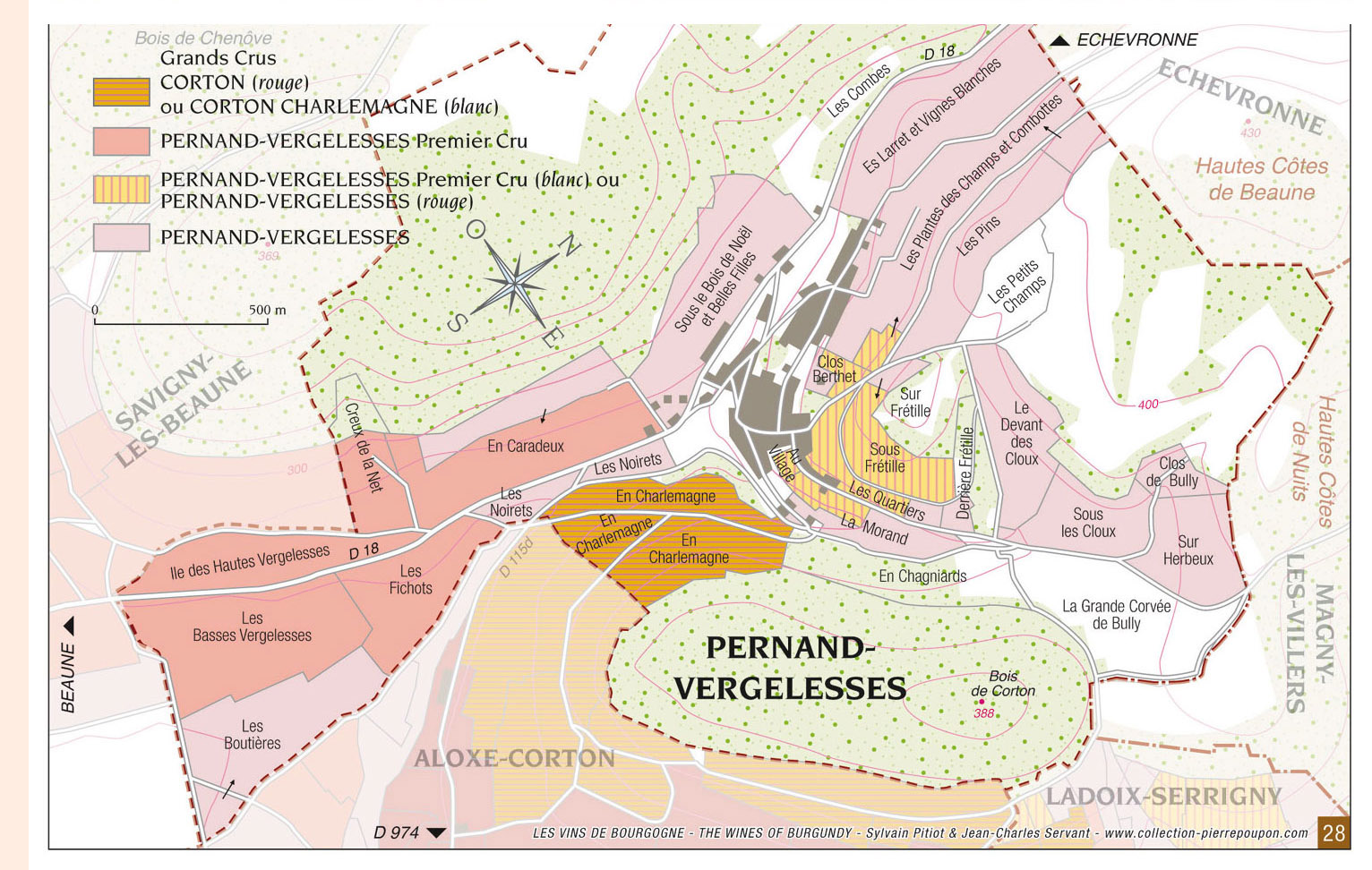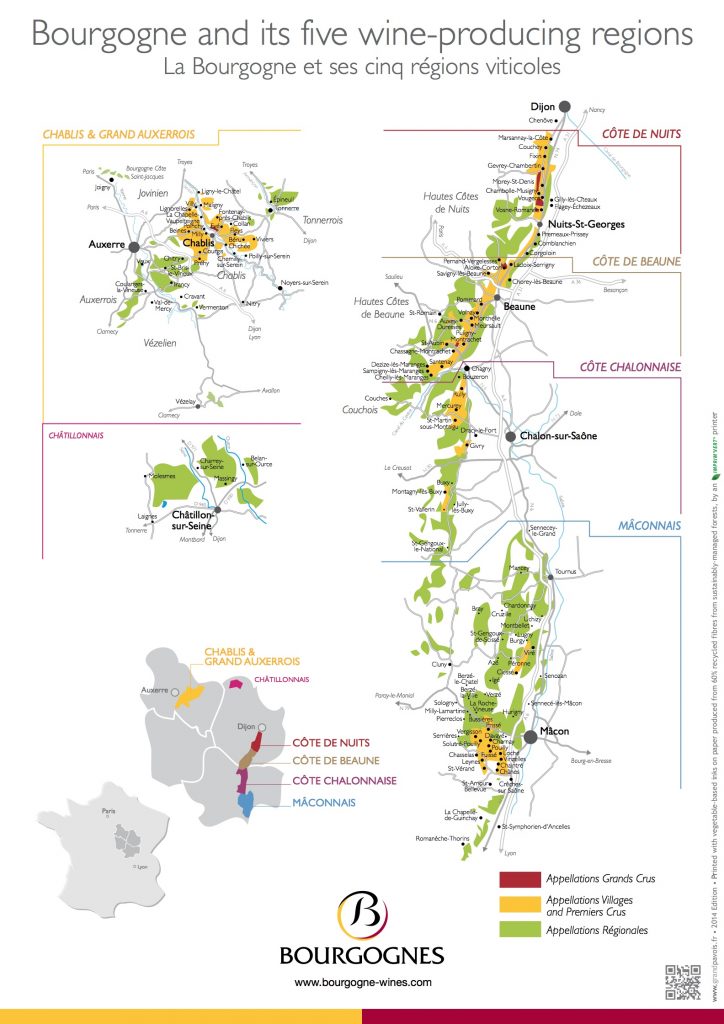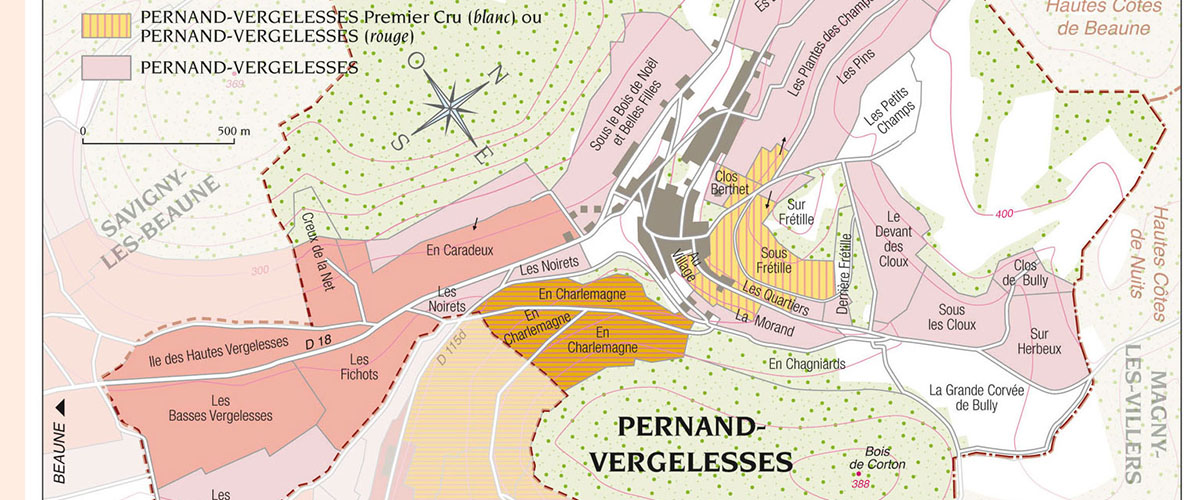Burgundy is home to some of the world’s greatest Pinot Noir and Chardonnay + a splash of Aligoté.
In our Getting Your Head Around Burgundy, we’re exploring the main villages of Burgundy, its viticulture, winemaking, classifcation systems, and, of course, Burgundy’s wines.
Part 11 explores the Village of Pernand-Vergelesses in the very north of the Côte de Beaune
Make sure you join our community to get the latest articles from the Wine Bites Mag as they come out. You’ll find all of our Burgundy related articles here.
There’s a quick refresher on the regions of Burgundy at the end of this post to help you place yourself within Burgundy and France as a whole.
See all of our wines from Pernand-Vergelesses
The Village of Pernand Vergelesses
The appellation of Pernand-Vergelesses is tucked into the junction of two valleys among the hills of the Côte de Beaune. The nearby Hill of Corton stands guard over it and two other villages, Aloxe-Corton and Ladoix-Serrigny.
Most of the vineyards face East or South with a few facing North-East and range in altitudes from 250-300 metres. On the lower slopes are clayey-limestone soils mixed with “chaillots” (flinty residues from silcaceous limestones). These soils are easily worked and rich in potassium and phosphoric acid. Mid-slope, the pebbly limestone soils suit the Pinot Noir, and at the top, the brown or yellowish marly soil harbours the Chardonnay.
Stylistically, Pernand-Vergelesse is known for its terroir-driven wines, producing Pinot Noir and Chardonnay with pronounced mineral characters. In their youth, the whites are often characterised as tight and lean, with fresh natural acidity and attractive aromatics. With time they open and evolve, gaining layers of complexity while retaining their distinctive minerality.
Pernand-Vergelesse reds are known for their pronounced red fruit aromas, firm fine tannins and excellent minerality. The Premier Cru Pinot Noirs often display greater depth than the villages wines, striking a balance between finesse and structure with concentrated fruit and silky tannins. These wines can be enjoyed young, but can also age very well – in some case for 5-10 years.
Pernand-Vergelesses is home to eight climats classified as Permier Crus: Clos Berthet, Creux de la Net, En Caradeux, Ile des Vergelesses, Les Fichots, Sous Frétille, Vergelesses, Village de Pernand. The village also boasts a number of highly-regarded Lieux-Dits, including Les Plantes des Champs et Combottes, Sous le Bois de Noël et Belles Filles and Sur Herbeux.
Check out Levi Dalton’s podcast with Claude de Nicolay which touches on this excellent appellation.
This video provides an overview of the sites, soils and styles of Pernand-Vergelesses.
See Pernand-Vergelesse through the eyes of winemaker Christine Dubreuil of Dubreuil-Fontaine.
Detailed Map of Pernand-Vergelesses
Click on any image to view full size map

The Regions of Burgundy
The best bit of Burgundy is a thin strip running from North to South around 50km in length, to the South East of Paris
It’s split into three main regions, within each of these regions there are villages which have specific single vineyards planted in them to the varieties red varieties: Pinot Noir and Gamay, and the white varieties: Chardonnay and Aligoté, a lesser variety that produces some fun wines at more affordable prices.
The three main regions in the strip South of Dijon are:
- Côte D’Or – meaning the Golden Slope, derived from it’s original name, Côte d’Orient, East Slope, within which rest:
- Côte-de-Nuits – South of the city of Dijon and North of the town of Beaune famous for it’s Pinot Noir. The best known villages are: Gevrey-Chambertin, Morey-St-Denis, Chambolle-Musigny, Nuits-St-Georges and Vosne-Romanée. 5% of Burgundy production including Chablis.
- Côte-du-Beaune – The area around and South of Beaune famous for Chardonnay including the 5 Grand Cru vineyards and many very good Pinot producing vineyards. The best known villages are: Puligny-Montrachet, Chassagne-Montrachet, Mersault, Volnay, Pommard and Saint Aubin. 10% of production including Chablis.
- Côte-Chalonaise – Mixing more affordable Chardonnay and Pinot that can be of excellent quality. The villages of Rully, Mercurey and Givry producing their best wines.
- Mâconnaise – The least regarded of the main regions, still capable of producing some very good wines. Becoming a shining light for value with the ever increasing prices of Burgundy.
In addition to these, the two regions of Beaujolais, mostly producing Gamay, (at the South end of the Dijon Strip) and Chablis, mostly producing Chardonnay (between the southern part of Champagne and Dijon) are part of the Bourgogne wine region.


You must be logged in to post a comment.